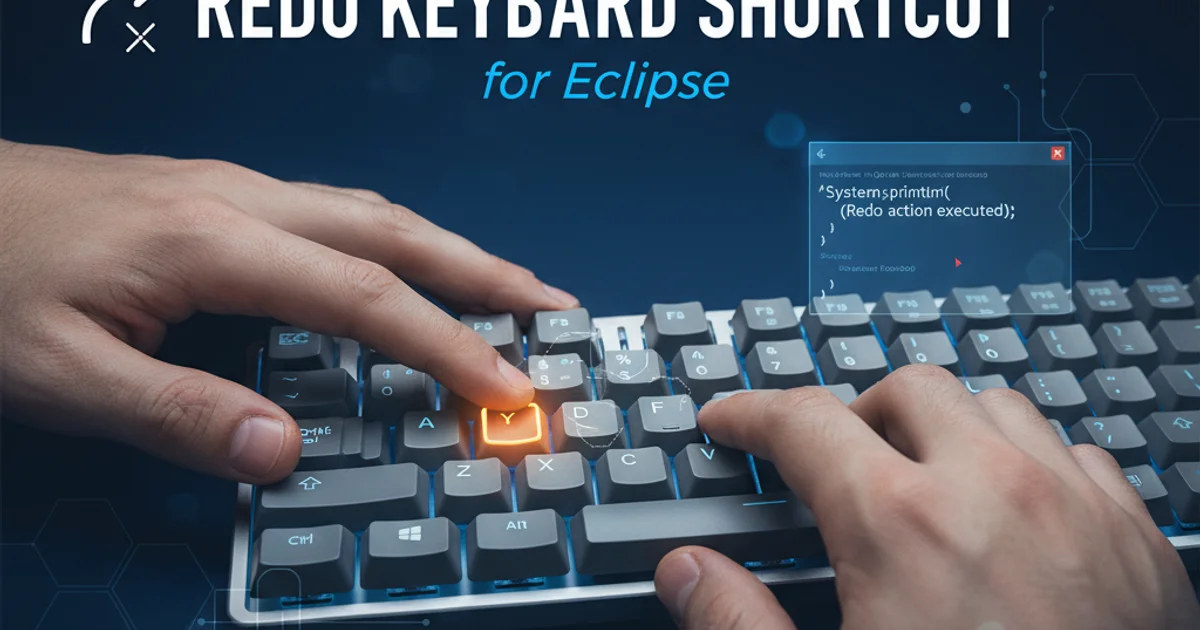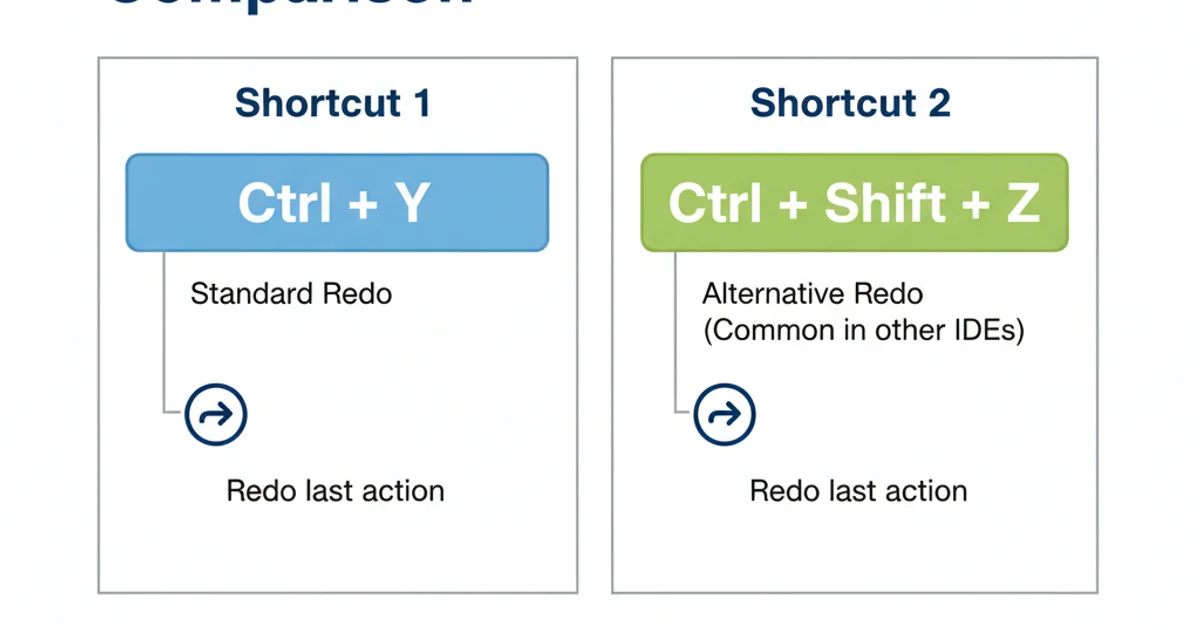Redo keyboard shortcut for Eclipse
Categories:
Mastering the Redo Keyboard Shortcut in Eclipse

Learn how to efficiently use the redo keyboard shortcut (Ctrl+Y or Ctrl+Shift+Z) in Eclipse to reverse accidental undo operations and boost your productivity.
In the fast-paced world of software development, making mistakes is inevitable. Fortunately, Integrated Development Environments (IDEs) like Eclipse provide powerful tools to correct them. While 'undo' (Ctrl+Z) is a universally known savior, its counterpart, 'redo', is equally crucial for reversing an undo operation. This article will guide you through the redo functionality in Eclipse, ensuring you can navigate your code changes with confidence.
Understanding Undo and Redo in Eclipse
Eclipse, like most modern text editors and IDEs, maintains a history of changes made to your files. This history allows you to step backward (undo) or forward (redo) through your modifications. The redo function is particularly useful when you've undone too much, or when you want to re-apply a change that you previously undid. It's a fundamental feature for efficient code editing and refactoring.
flowchart TD
A[Start Editing] --> B{Make Change 1}
B --> C{Make Change 2}
C --> D{Make Change 3}
D -- "Ctrl+Z (Undo)" --> C
C -- "Ctrl+Z (Undo)" --> B
B -- "Ctrl+Y (Redo)" --> C
C -- "Ctrl+Y (Redo)" --> D
D --> E[Continue Editing]Flowchart illustrating the sequence of undo and redo operations in Eclipse.
The Standard Redo Shortcut: Ctrl+Y
The most common and widely recognized keyboard shortcut for redo in Eclipse, consistent with many other applications on Windows and Linux, is Ctrl+Y. When you press this key combination, Eclipse will re-apply the last undone change. You can press it multiple times to re-apply several changes in sequence, moving forward through your edit history.
Ctrl+Y is standard, some Eclipse installations or specific plugins might alter default keybindings. If Ctrl+Y doesn't work, check your keybinding preferences.Alternative Redo Shortcut: Ctrl+Shift+Z
For users coming from macOS environments or those who prefer a more symmetrical shortcut to Ctrl+Z (undo), Eclipse also supports Ctrl+Shift+Z for redo. This shortcut is often preferred as it directly mirrors the undo action by adding the Shift modifier. Both Ctrl+Y and Ctrl+Shift+Z perform the exact same redo operation; it's purely a matter of personal preference or muscle memory.

Two common keyboard shortcuts for redo in Eclipse.
Customizing Redo Keybindings
If neither Ctrl+Y nor Ctrl+Shift+Z suits your workflow, Eclipse allows you to customize keyboard shortcuts. This can be particularly useful if you have conflicts with other applications or if you're migrating from an IDE with different default keybindings.
1. Open Preferences
Navigate to Window > Preferences in the Eclipse menu bar.
2. Access Keys Settings
In the Preferences dialog, expand General and select Keys.
3. Filter for Redo Command
In the Type filter text field, type "redo" to quickly find the relevant command. The command is typically named Edit / Redo.
4. Assign New Binding
Select the Redo command. In the Binding field, press your desired key combination (e.g., Alt+R). Ensure the When dropdown is set to Editing Text or In Windows for broad applicability.
5. Apply Changes
Click Apply and then OK to save your new keybinding.